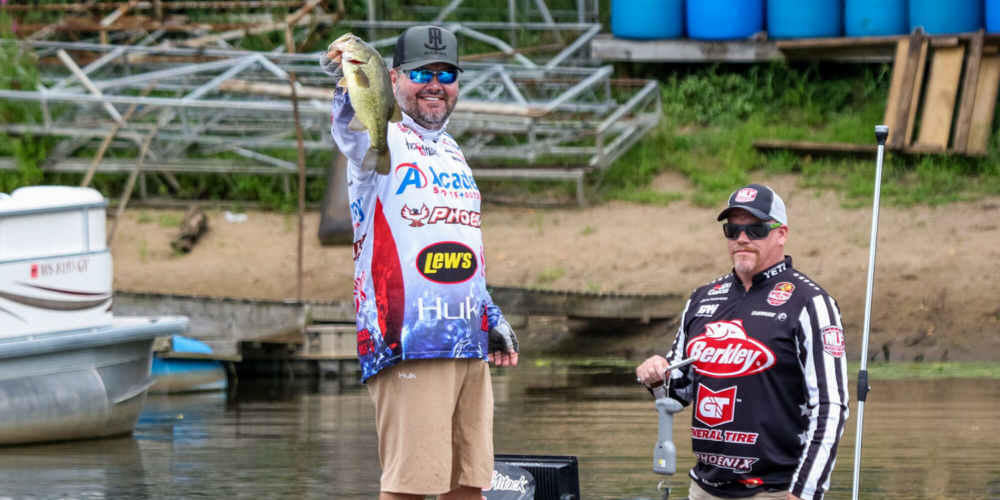Why Greg Hackney Prefers Fall Fishing on Natural Lakes

Technically, fall is here. It may not feel like it for a lot of the country, but according to the autumnal equinox on the calendar, it’s time to start thinking about fall.
It’s hard for MLF pro Greg Hackney to wrap his head around summer ending since he has yet to see a break from the scorching heat in his home state of Louisiana. Still, he knows where he likes to fish when it comes to catching fall bass.
Finding Fall in Reservoirs vs. Natural Lakes
Reservoir lakes can be found pretty much anywhere and offer quality fishing year-round. But by late September, Hackney doesn’t even think about putting his Phoenix boat in the water anywhere but a natural lake.
“Since everything is more condensed in natural lakes, you typically have shallower water and the bait moves to the shallow water much quicker,” Hackney said.
While water temperature and falling water levels are the biggest indicators that fall has arrived on reservoirs, Hackney has noticed over the years that natural lakes begin to turn towards autumn patterns thanks to something else.
“The shortening of days seems to affect the fish in natural lakes much quicker than it does in reservoirs,” Hackney explained. “In reservoirs, it seems like water temperature is a bigger indicator of when the fish will be moving to the back of creeks. In natural lakes, it’s not so much about temperature but about how much sun there is during the day. I live in Louisiana and I live around a bunch of natural lakes. The fish here are already making their fall transition and we haven’t had a cool day yet. It’s all about shorter days on natural lakes.”
Hackney also takes notice of what stage the vegetation is in when planning his fall fishing expeditions.
“A lot of those natural lakes that have grass have vegetation that will cycle,” Hackney detailed. “Some grass starts dying off in September, and that seems like another trigger for the fish to start firing up. It’s not just in natural lakes, I see the same kind of stuff happening in river systems as well. That’s when you know it’s time for fall.”
Figuring Out the Natural Fall Bite
When many anglers think of fall fishing they think of one thing: shad. Finding the shad, moving to the backs of creeks, and finding shallow water are common goals for most anglers. Hackney agrees with those sentiments, but when it comes to fishing on natural lakes, it’s not always just about the shad.
“I’ve found that fish in natural lakes during the fall go back to the same sort of pattern they were in during the spring,” Hackney said. “That does not happen on a reservoir. Reservoir fall fishing is all about the bait fish. As for natural lakes, it’s more about bluegill, crawfish, and other forms of bait, not just shad.”
As the shad start to move to the creeks and into shallower waters, the topwater bite starts to pick up in most reservoirs. It’s a sure-fire way to get bites if you locate a school of shad. But Hackney says that fishing natural lakes gives you a lot more options on baits.
“You can walk the dog all day long on a reservoir in the fall and get bites,” Hackney confirmed. “I’ve found that poppers, buzzbaits and frogs are better on natural lakes. While a chrome-colored topwater is perfect for reservoirs all across the country, baits that make more racket and noise are better on natural lakes.”
That racket is required according to Hackney because of how colored the water can be on natural lakes.
“Reservoirs typically have clearer water in the fall because of the drawdown or less rain at the end of the summer,” Hackney explained. “Natural lakes tend to be more green in color in the fall because of the algae in the summer. That green doesn’t die off until the water starts to get cooler and that may not happen for a while. That greener water color really opens up the different kinds of lures you can use and makes power fishing a whole lot easier.”